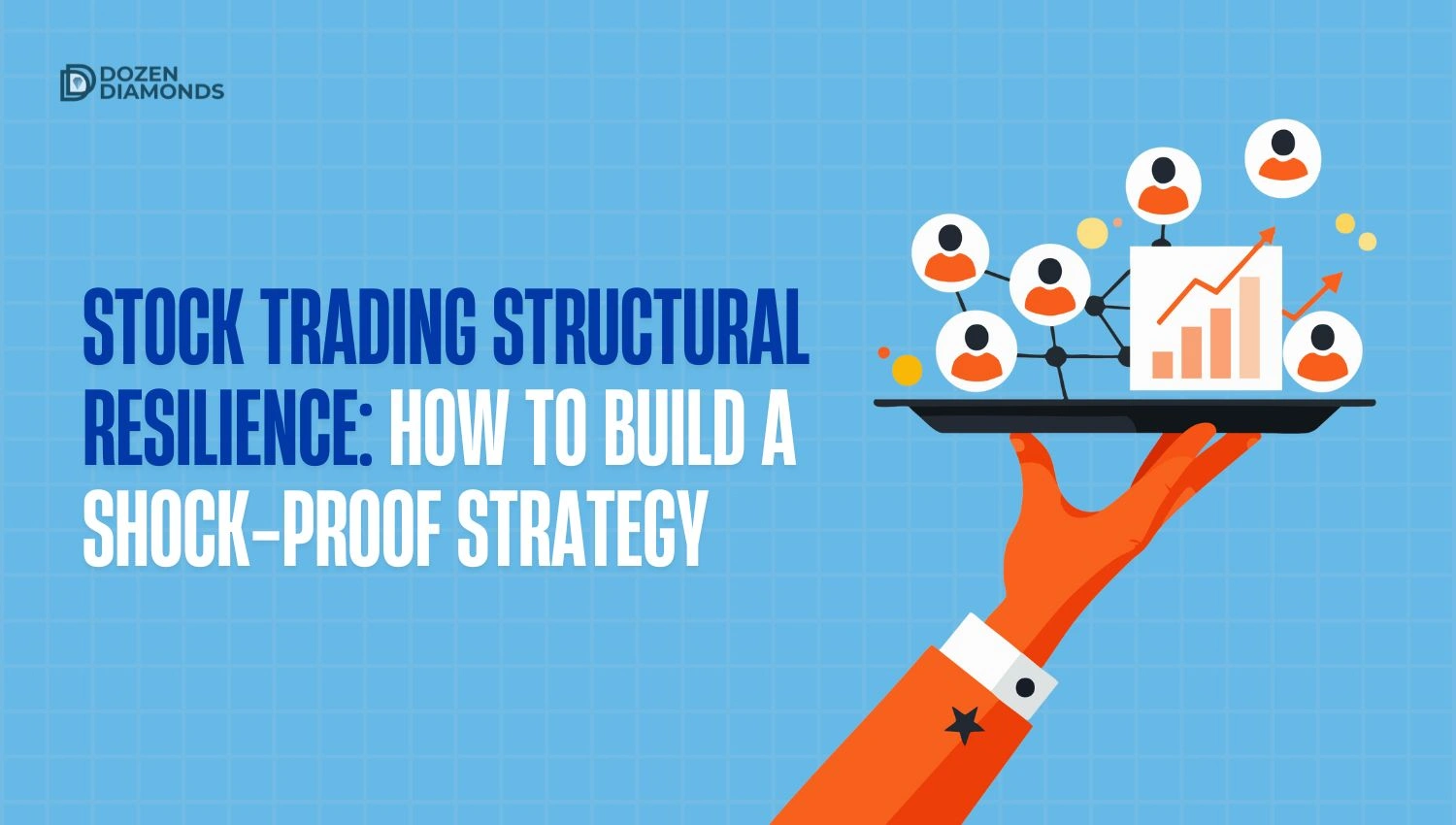Stock Trading Structural Resilience: How to Build a Shock-Proof Strategy

Table of Contents
Introduction
In backtests of rule-based resilient strategies, real portfolios showed 25–40% smaller drawdowns across volatile market regimes by embedding resilient structures. You will gain tools to:
- Fortify your strategy against market crashes
- Automate adaptive responses to regime shifts
- Sustain consistent performance especially during stress
Why Structural Resilience Matters in Stock Trading
“Structural resilience” in this context means creating a trading framework that stays intact under stress, not just reacting to damage. In stock trading, it helps you:
- Survive extreme volatility and black swan events
- Reduce emotional fragility under drawdowns
- Maintain continuity through regime changes
Many resilience articles focus on physical infrastructure or climate systems, but in trading, structural resilience translates to strategy architecture that anticipates failures, incorporates redundancy, and adapts gracefully.
What Traders Often Miss & What This Article Covers
What many articles miss:
- 🔹 The distinction between surface resilience (e.g. adding a stop-loss) vs structural resilience (fundamental design)
- 🔹 How to embed redundancy, modularity, and adaptation in trading
- 🔹 Specific architecture patterns (switching modules, fallback strategies)
- 🔹 Real trading metrics showing resilience gains
Here, you will see:
- 🔹 A modular blueprint for resilient strategies
- 🔹 Examples of layered fallback logic
- 🔹 Measures to reduce single-point failure
- 🔹 An action plan — not just theory
Core Building Blocks of Structural Resilience in Trading
1. Redundancy & Diversification of Tactics
Do notrely on a single strategy. Use multiple uncorrelated systems (trend, mean reversion, carry). If one fails under stress, others may survive.2. Modular Strategy Design
Break your framework into modules (entry, exit, risk control, regime detection). Modules can fail or be switched off independently — you prevent one failure from collapsing everything.3. Adaptive & Backstop Layers
Include fallback logic. Example: if volatility explodes and your primary algo is struggling, switch to a low-risk fallback (e.g. hedged / mean reversion / cash).4. Graceful Degradation
Even if parts of the system fail, critical core remains operational (e.g. capital preservation, basic hedging). Rather than 100% collapse, degrade performance but avoid ruin.5. Feedback & Self-Repair
Your system should monitor its own health (metrics, drawdowns, signal stability). If anomalies detected, trigger diagnostics, reduce scale, or switch modules.6. Risk & Buffer Sizing
Maintain margin buffers and capital cushions. Use position sizing rules that automatically reduce exposure in stressed states, maintaining structural strength.How to Implement This in Stock Trading
| No | Component | Purpose | Implementation Idea |
|---|---|---|---|
| 1 | Regime Detector | Recognize market stress / structural shifts | Use volatility regime switching, correlation breakouts, signal volatility metrics |
| 2 | Module Pool | Multiple independent strategies | Trend following, mean reversion, carry, volatility arbitrage modules |
| 3 | Fallback Logic | Safe fallback when primary fails | If drawdown crosses threshold, pause primary module, activate defensive module module, activate defensive module |
| 4 | Health Monitor | LouiSelf-check system stabilitys Hudson | Monitor equity curves, volatility, signal divergence, slippage anomalies |
| 5 | Exposure Controller | Scale exposure dynamically | Decrease weights in volatile / unstable regimes, increase in calm ones |
You could in pseudocode write:
if regime == “high stress”:
disable aggressive modules
enable fallback module
scale exposure = 0.3 × normal
if module loss > threshold:
shut module off
reallocate capital
monitor signal stability every N days
Case Studies & Evidence
Case: Simple Resilient Strategy in Trends vs Crashes
A study by Bytepawn demonstrates that simpler, resilient approaches with patience and structure often outperform over volatile regimes. Bytepawn – Marton Trencseni
Case: Automated ETFs Showing Resilience in Market Turmoil
During extreme volatility, automated ETF trades surged, showing resilience in execution infrastructure — a parallel to how well-architected trading systems endure stress. Tradeweb Markets
Market Graphs & Metrics (Hypothetical)
You could insert backtest charts showing drawdown curves for a naive vs structurally resilient system, and compare Sharpe / max drawdown across regimes.
Common Pitfalls & How to Avoid Them
- Over engineering — do notmake modules too complex. Simple fallback rules often beat fragile complexity.
- Switching too often — regime detectors lag. Use confirmation filters to avoid whipsaws.
- Lack of buffer / over leverage — no resilience can rescue a system that blows through capital.
- Ignoring transaction costs & slippage — modules must account for real costs, especially during stress.
- Single-point dependencies — do notcentralize on one data source, one broker, one signal. Build redundancy there too.
Summary & Key Takeaways
- Structural resilience is not just adding defenses — it is building architecture that anticipates failure.
- In stock trading, this means modular systems, fallback paths, self-monitoring, and dynamic exposure.
- When markets experience shocks, a well-designed resilient system will degrade gracefully, not collapse.
- You now have the blueprint and logic to embed structural resilience in your trading.
Your Next Step: Build Resilience with Kosh App
Knowing how to design resilient stock trading systems is valuable — but applying it consistently is the real challenge. The Kosh App has resilience built in:
- Manages risk automatically in volatile markets
- Applies the Stressless Trading Method strategy during volatile market
- Automates the investing process eliminating emotional bias and delays in decision making
If you are ready to turn resilience theory into practice, let Kosh App do the heavy lifting for you.
Download the Kosh App now